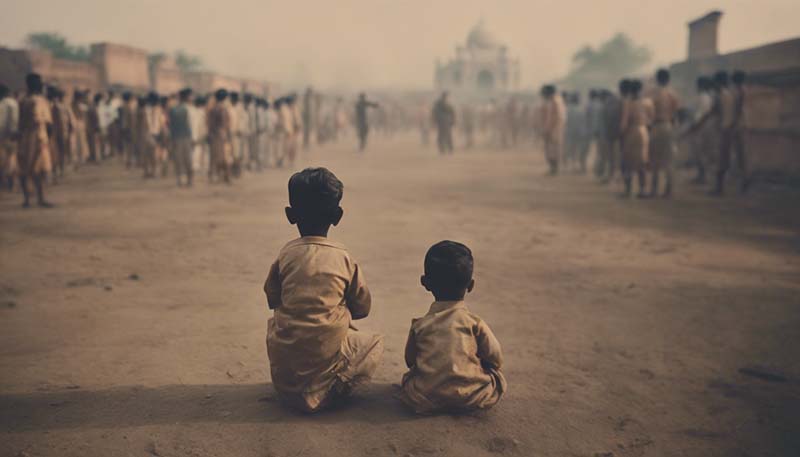The Partition of India: Independence and the Birth of Two Nations
The Partition of India in 1947 was a defining moment in the history of the Indian subcontinent. It marked the end of British colonial rule and the birth of two sovereign nations: India and Pakistan. This article explores the historical context, the events leading up to the Partition, the process itself, and its aftermath.
**Historical Context**
The British had ruled over the Indian subcontinent for nearly 200 years, and by the early 20th century, the Indian nationalist movement was gaining momentum. The struggle for independence was led by the Indian National Congress, with Mahatma Gandhi at the forefront, advocating for non-violent civil disobedience.
However, the demand for a separate Muslim state was also growing, led by the All-India Muslim League, under the leadership of Muhammad Ali Jinnah. The League believed that Muslims were a separate nation and that they would be better served by a state of their own.
**Events Leading to the Partition**
The British, facing increasing pressure for independence and the growing divide between Hindus and Muslims, decided to grant India self-governance. The process began with the Government of India Act of 1935, which established provincial autonomy, but it was not until the post-World War II period that serious discussions for independence began.
Advertisement
In 1946, the British Cabinet Mission arrived in India to discuss the transfer of power. Despite several rounds of negotiations, an agreement could not be reached due to the deep-seated differences between the Congress and the Muslim League.
**The Partition Plan**
In June 1947, Lord Louis Mountbatten, the last Viceroy of India, announced the Partition plan, known as the Indian Independence Act 1947. The plan called for the creation of two separate dominions: India, with a Hindu majority, and Pakistan, with a Muslim majority. The princely states were given the choice to join either of the new dominions or remain independent.
The Partition plan was met with mixed reactions. While some saw it as a necessary step towards independence, others lamented the division of the subcontinent along religious lines.
**The Process of Partition**
The process of Partition was marked by chaos and violence. With the announcement of the Partition plan, there was a mass movement of people across the newly drawn borders. Millions of Hindus and Sikhs fled from Pakistan to India, while millions of Muslims moved from India to Pakistan.
This mass migration was accompanied by widespread violence, as communal tensions erupted into bloodshed. The exact number of casualties is still debated, but it is estimated that between 200,000 and 2 million people were killed in the violence that accompanied the Partition.
**The Aftermath of Partition**
The Partition of India had far-reaching consequences. It created two new nations, India and Pakistan, which have had a tumultuous relationship ever since. The violence and trauma of Partition have left deep scars that continue to affect the people and politics of both countries.
The division of the subcontinent also led to the displacement of millions of people, many of whom lost their homes, livelihoods, and families. The refugee crisis that followed the Partition was one of the largest in human history.
In addition, the Partition led to the division of cultural and historical sites, as well as the separation of families and communities. It also created new challenges for the governments of both nations, as they struggled to establish their identities and build their economies in the aftermath of British rule.
**Conclusion**
The Partition of India was a complex and tumultuous event that marked the end of British colonial rule and the birth of two new nations. It was a time of great change and upheaval, with far-reaching consequences that continue to shape the politics and culture of the Indian subcontinent.

While the Partition was a necessary step towards independence, it also represented a tragic division of a people and a land. It is a reminder of the high human cost of political decisions and the importance of striving for unity and understanding in our increasingly interconnected world.